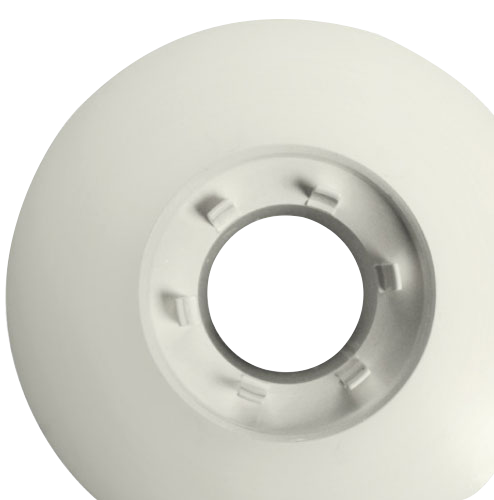Home / Waterproofing Guide
Onsite waterproofing of the “wet area” has almost totally replaced the use of copper trays, the old way of containing the water underneath the tile bed.
Onsite waterproofing using a range of polymer materials is usually applied as a liquid which then cures to a tough waterproof barrier to stop the migration of moisture into sensitive materials such as the surrounding timber, plasterboard, mortar or carpet.
Connection of the traditional copper tray to the drainage system was via a brass flanged waste that was soldered onto the copper tray and then connected to the pipe work via a threaded connection.
In the very early days of the “onsite sealing revolution” in the late 1980”s we recognized the importance of this connection from the sealing material onto the drainage system, a number of flanged fittings were developed which became the industry standard. The early Seala-Waste and Puddle Flange provided:
Our early success with these products did not stop us from pursuing new breakthroughs in design, in some cases aimed at improving the functionality of the system and in other cases aimed at improving the aesthetic appeal of the grille.
We hope that you can join the many thousands of people, tilers, waterproofers, plumbers, designers, and architects who have used and trusted our products since those early days.
The origins are clearly from the copper tray days, when a bed was graded to falls inside the tray so that the tiles drained to the outlet. The underlying bed was often saturated with water that had got through the junction of the walls and floor, as the water was contained within the waterproof tray – no adverse effects were usually noted. The waste fitting incorporated some holes designed to allow the bed to drain of moisture.
With onsite sealing, this method is able to be refined; in that our flanges can be recessed to form the lowest point under the bed. Some even advocate a topping prior to the membrane to ensure any free water in the bed can drain away, in every case the benefits of this need to be taken against the prevailing standards of the day.
Nevertheless, it needs to be understood that the tiles then get fixed to the bed, and there is a great likelihood that moisture will be present in the bed. If the membrane is robust and waterproof, then – just like the copper tray scenario, there is probably no harm in having some moisture present. The leak bypass function of our flanges will ensure that free water will not build up to a point where it is foetid.
Some people prefer the falls be put in with mortar, with the membrane then applied to the topping and then the tiles directly fixed to the membrane. This development emerged from the new membranes that allowed direct sticking of the tiles to the membrane.
This technique addresses the concern of some who dislike idea of a wet bed; however a bigger problem was how to ensure a positive connection of the membrane to the drainage system. With the altitude of the membrane now at the very same altitude as the tiles, where could the connection be made? The answer was to revert to under bed membrane in the area immediately around the waste to allow connection to our flange. This hybrid solution ensures a positive connection to the drainage system while still preserving a largely dry bed. The recess formed in the area immediately around the waste can be filled in with impervious material such as tile cement prior to tiling.
The importance of providing a flanged connection to penetrations through wet area floors is now well recognized. When we pioneered the concept of Puddle Flanges for use in residential buildings, we consulted heavily with architects, builders, plumbers and waterproofing applicators.
The ingress of water into moisture sensitive materials such as timber, plasterboard, carpet, mortar or electrical wires can have devastating consequences. Wet areas in construction typically provide the greatest source of call backs to the builder. There is no doubt that Puddle Flanges that brace the pipe work which allow moisture to escape from the mortar bed provide excellent protection against drips around penetrations.
Puddle Flanges are made of robust ABS plastic, used mainly in suspended floors (timber or concrete) or in some cases cast into the slab.

| MEGAFLEX™ CONNECTION | AVAILABILITY |
| 50mm Megaflex™ | – Not available with plastic grates – Availabe with Bounty Floor Grates (plastic undercap required) |
| 80mm Megaflex™ | – Available with plastic grates – Available with Bounty Floor Grates |
| 100mm Megaflex™ | – Available with plastic grates – Available with Bounty Floor Grates |
After the installation of your Pop Down® waste, if you find that it does not hold water when closed there may be an installation issue. A simple test can be conducted to see if water is passing around the waste (in the case of an installation fault), or through the waste, which would be a product fault.
To test, close your Pop Down® waste and partially fill your basin with water. If the water empties from the basin but does not empty from the well above the Pop Down® mechanism, it would suggest an installation fault. In this case you would need to call the installing plumber.
If the water empties from the basin and also empties from the well above the Pop Down® mechanism, it would suggest a product fault. In this case, contact us and we will send a replacement mechanism.